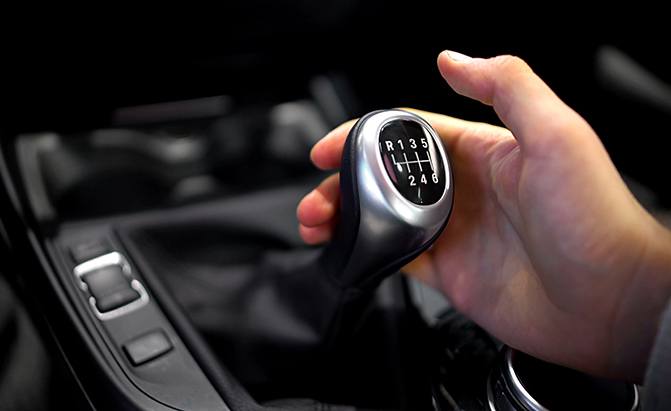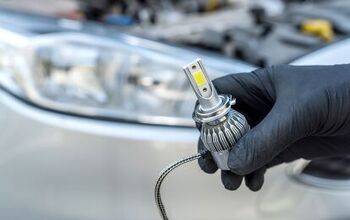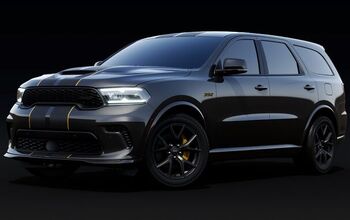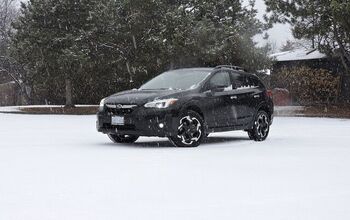The Best Transmission Coolers for Reliable Performance
The automatic transmission remains one of the most significant inventions in the history of the auto industry. In its early days, it made driving a car easier, and in recent years has allowed automakers to engineer some of the most fuel-efficient vehicles ever produced. Most modern automatics use hydraulic pressure to engage and switch gear ratios, along with a fluid coupling that delivers power from your vehicle’s engine to its transmission. Therefore, your transmission’s fluid is integral to its operation, and also lubricates the transmission’s hundreds of moving parts.
But transmission fluid also absorbs the heat generated by friction between those moving parts, and the hotter your transmission fluid gets, the less effective it is at doing its job. That’s why most vehicles with automatic transmissions also have a transmission cooler. This component is often built into the radiator, where it can transfer excess heat from the transmission to the outside air. However, your car or truck’s OEM transmission fluid cooler may not provide enough cooling capacity to handle the extra heat generated when you use your vehicle to tow a trailer, haul heavy loads, or drive up long, steep hills.
For those driving situations, you may want to consider installing an aftermarket transmission fluid cooler that can better control the temperature inside your vehicle’s transmission.
To learn more about the best transmission coolers, refer to our table of contents.
Table of contents
- 1. Editor’s Pick: Hayden Automotive 679 Rapid-Cool Transmission Cooler
- 2. Best Transmission Cooler for Import Cars: Hayden Automotive 402 Ultra-Cool
- 3. B&M 70268 SuperCooler
- 4. Mishimoto MMTC F2D-99SL Transmission Cooler
- 5. Mishimoto MMTC Ram-03SL Transmission Cooler
- 6. Mishimoto MMTC-K2-14 Transmission Cooler
- 7. Dorman 918-202 Automatic Transmission Cooler
- 8. Mishimoto MMOC-F Transmission Cooler With Electric Fan
- 9. Evil Energy Transmission Cooler
- 10. TYC 19031 Transmission Cooler for GM Trucks and SUVs
- Why do you need a transmission cooler?
- How does a transmission cooler work?
- What should you look for in a transmission cooler?
- Can you install a transmission cooler yourself?
1. Editor’s Pick: Hayden Automotive 679 Rapid-Cool Transmission Cooler
We decided to start our list of the best transmission coolers with the Hayden 679 Rapid-Cool because this well-made, universal-fit product works on a vast number of vehicles from a wide range of manufacturers. Hayden says the 679 Rapid-Cool is designed to provide enough cooling to let you tow up to 10,000 pounds (provided your vehicle is rated for that much weight) and a gross vehicle weight rating (the combined weight of your trailer and tow vehicle) up to 30,000 pounds. Those figures mean this aluminum transmission cooler is suited to Class A motorhomes and large fifth-wheel travel trailers.
That’s impressive performance for a transmission cooler measuring 11 inches by 11-5/8 inches and just 3/4-inch thick—dimensions that make it easy to install. Hayden achieves that performance with 30 rows of cooling tubes, giving your transmission fluid plenty of time to shed excess heat.
Hayden recommends this transmission cooler for use in popular trucks like the GMC Sierra and Chevrolet Silverado, the Ford F-Series, and many domestic classic vehicles. And if you drive an import model from Mazda, Toyota, or Hyundai, the 679 Rapid-Cool is a good choice, too.
For your peace of mind, Hayden warranties the 679 Rapid-Cool for two years or 24,000 miles.
Pros | Fits a wide range of vehicles, an affordable way to improve transmission reliability |
Cons | Because this is not an OEM replacement, you will have to find an appropriate place to install the cooler, also, you will need to calculate how much piping you will need. |
2. Best Transmission Cooler for Import Cars: Hayden Automotive 402 Ultra-Cool
If you drive an import car and are looking for an inexpensive way to keep your automatic transmission cool, the Hayden Automotive 402 Ultra-Cool is a good option. This is a basic tube-and-fin cooler with just four tubes for fluid circulation, but measures less than 16- inches long by five-inches tall and 0.75-inch thick, so it will be easy for you to install in your compact or mid-size car.
Hayden says the 402 Ultra-Cool is compatible with a wide range of import vehicles from brands like Acura, Honda, Hyundai, Kia, Mazda, Nissan, Subaru, and Toyota, along with many domestic-branded models. Despite its basic design and compact size, the company says the 402 Ultra-Cool provides adequate cooling for a gross vehicle weight rating up to 16,000 pounds and towing capacity up to 2,500 pounds.
It accomplishes that with high-efficiency turbulators in the tubes that increase this cooler’s ability to shed excess heat. This product is manufactured with ultrasonic soldering for better reliability, and pressure tests it to 150 PSI for your peace of mind. This aluminum cooler comes with transmission fluid hoses and clamps.
Pros | An inexpensive way to provide effective transmission cooling, buyers say they saw significantly lower fluid temperatures |
Cons | Does not include mounting brackets, some buyers complained that the supplied hose clamps slipped off after installation, others said the cooler arrived with bent fins |
3. B&M 70268 SuperCooler
B&M is a well-known name in the aftermarket auto industry thanks to its specialization in transmission-related products. The SuperCooler transmission cooler is a good example of how the company gained its solid reputation. The 70268 is the mid-range model in B&M’s line of SuperCooler products. This transmission cooler measures 11 inches by 7.25 inches and 0.75-inch thick. However, you get more efficient performance and cooling comparable to a larger unit thanks to B&M’s stacked-plate design.
The company says this SuperCooler has 15 percent less flow restriction than a cooler with a more traditional tube-and-fin design. The result is a transmission cooler that can handle an 18,000-pound gross vehicle weight rating. You can install this cooler in whatever orientation is best for your vehicle.
Another advantage of the stacked-plate design is that it’s more resistant to damage from rocks and other debris that might get thrown up by other vehicles on the road. That means less worry that your road trip will be interrupted by a transmission fluid leak.
Pros | Includes all mounting hardware, can be mounted in any orientation, durable and efficient stacked-plate design |
Cons | At least one buyer said the included hose clamps were not sufficient to prevent a transmission fluid leak, another buyer wished the kit included longer lengths of hose |
4. Mishimoto MMTC F2D-99SL Transmission Cooler
Next up is the first of two transmission coolers we recommend if you drive a heavy-duty pickup truck. The Mishimoto MMTC F2D-99SL is designed specifically for Ford Super Duty trucks with the 7.3-liter Powerstroke diesel engine. This is a direct-fit part, meaning it is designed so that you can install it in place of the transmission cooler that came on your truck from the factory. Mishimoto says this cooler will reduce the temperature of your transmission fluid by 10-degrees Fahrenheit.
According to the manufacturer, the F2D-99SL lives up to that promise with its 37-row stacked plate design, which creates more cooling surface area than the truck’s stock nine-row cooler. This cooler also adds one quart to your transmission fluid’s capacity by increasing the size of the cooler core by 265 percent.
The F2D-99SL is made of 6061 aluminum and measures 34-inches long by 23.5-inches high, and is 1.34-inches thick.
Mishimoto’s kit includes the cooler itself, plus two high-pressure transmission fluid lines, four worm-gear clamps, and all mounting hardware.
Pros | A direct-fit replacement that adds significant cooling capacity, boasts more efficient stacked-plate design |
Cons | One buyer said the product didn’t come with installation instructions, an expensive solution, but the performance appears to be worth the cost |
5. Mishimoto MMTC Ram-03SL Transmission Cooler
Next up is another Mishimoto product you might be interested in if you drive a heavy-duty pickup, but this one is designed for Ram 2500 and 3500 models with the Cummins 5.9- and 6.7-liter turbodiesel engines. With the 03-SL transmission cooler, Mishimoto gives you a 212-percent increase in core volume and a 244-percent bump in fluid capacity. This cooler uses a stacked-plate design that provides more efficient cooling. Mishimoto doesn’t make any claims about how much you can expect this cooler to reduce your transmission fluid temperatures, but satisfied buyers say their transmission fluid temperatures are 20- to 40-degrees Fahrenheit cooler than before.
Because this cooler is a direct-fit replacement for the Ram 2500/3500’s factory unit, it incorporates a thermostat that helps the transmission warm up more quickly. Mishimoto says it corrected a flaw with the stock design: when the factory thermostat fails, it sticks closed, which can cause your transmission to overheat. So with this cooler, you can easily service the thermostat or bypass it altogether.
With this kit, you also get high-pressure fluid lines, CNC machined stainless steel fittings, and worm-gear clamps.
Pros | A high-quality cooler that promises a major performance improvement, designed as an easy-to-install direct-fit replacement, comes with all necessary hardware. |
Cons | You pay a high price for this cooler’s performance |
6. Mishimoto MMTC-K2-14 Transmission Cooler
Mishimoto makes our list again with a product that ensures we cover the trifecta of domestic full-size pickup trucks: the MMTC-K2-14 is designed as an upgrade for the transmission cooler on Chevrolet Silverado 1500 and GMC Sierra 1500 models sold between 2014 and 2018. It will also fit on a number of other full-size GM trucks and SUVs. Like Mishimoto’s other transmission coolers, the MMTC-K2-14 uses a stacked-plate design to enhance cooling efficiency for your truck’s gearbox. This cooler is larger than the one installed at the factory, so you get an extra 0.65 quarts of fluid capacity and more than 3,000 square inches of cooling surface area.
One note to be aware of is that installing this cooler requires you to drill holes for the adapter lines that connect to your transmission’s fluid hoses, but Mishimoto provides instructions for how to do this.
If your truck is a 2014 model, you must relocate an ambient air temperature sensor with a bracket provided with this kit. Mishimoto also gives you the option to delete the factory-installed thermal bypass valve. This change allows transmission fluid to flow through the cooler at all times—an important consideration if you live in a hot climate.
Pros | An effective product to enhance performance in late-model trucks, a well-made product that promises quality |
Cons | Expensive, requires minor modifications to the truck |
7. Dorman 918-202 Automatic Transmission Cooler
From well-known aftermarket auto parts maker Dorman comes a transmission cooler designed as an OEM replacement for Ford F-150 and Lincoln Blackwood truck models sold from 2004 through 2008. While most of the products on this list are designed to provide better performance than the stock transmission cooler, this one matches the capacity of the part that came on your truck from the factory.
The Dorman 918-202 is a stacked-plate cooler with 10 rows of cooling passages. It measures 22.8-inches wide, 5-inches tall, and 1.3-inches deep. This cooler is painted black so that it doesn’t stand out when viewing the truck from the front.
Because it fits in the same location as the original cooler in your truck, Dorman does not supply any transmission fluid lines or hardware. However, it does come with mounting brackets that line up with the mounting points on your vehicle. If you need to replace the transmission fluid lines or any other related components, you’ll have to acquire those separately.
Pros | A true direct-fit replacement, so there’s no installation guesswork, an inexpensive way to repair a failed OEM part |
Cons | One buyer says the cooler’s fittings were faulty and caused a transmission fluid leak, another buyer said a fitting broke off when they tried to remove the transmission line from the cooler |
8. Mishimoto MMOC-F Transmission Cooler With Electric Fan
Mishimoto makes our list one last time with this transmission cooler, which adds an electric fan for increased airflow. This is a universal-fit product, so you should be able to install it on whatever vehicle you drive. Mishimoto says the MMOC-F is ideally suited to heavy-duty trucks and vehicles with supercharged or turbocharged engines.
You should also consider this transmission cooler if you do off-road driving. Extreme rock crawling can generate a lot of heat in your vehicle’s transmission, but low driving speeds limit how much air will pass through your vehicle’s stock cooler. This product is a great solution to that problem.
The Mishimoto MMOC-F’s eight-inch electric fan spins at 2,800 rpm to move 1,100 CFM (cubic feet per minute) of air over the tube-and-fin cooler.
Because this is a universal fit product, you will have to find the ideal mounting place in your vehicle, but Mishimoto makes that easier by supplying all the necessary hardware. The cooler has 3/8-inch fluid inlet and outlet hoses, plus a short length of wiring to connect the fan to your vehicle’s electrical system.
Pros | Electric fan provides robust cooling for heavy-duty and off-road vehicles, compact size |
Cons | Universal fit design means you have to find a mounting location, some buyers still wished for more cooling capacity for towing applications |
9. Evil Energy Transmission Cooler
From Evil Energy comes one of the most affordable transmission coolers on our list of recommendations. This is a universal fit product that is truly designed to work on whatever vehicle you drive. Evil Energy’s cooler uses a basic tube-and-fin design, which helped it keep the cost low to give you an inexpensive option for improving your transmission’s longevity.
This cooler comes in three sizes in order to fit a wide range of vehicles. The entry-level model is a four-pass cooler, but you can also choose from six- and eight-pass designs for more cooling capacity.
T-6061 aluminum construction keeps weight low. Evil Energy says its cooler uses 5/16-inch hose fittings and has been tested to 145 PSI with a hose working temperature range of 140- to 176-degrees Fahrenheit.
Your purchase includes five feet of hose and all necessary mounting hardware. Evil Energy doesn’t provide measurements for this cooler, but bear in mind the obvious fact that the six- and eight-pass versions are larger and will require more space for a clean installation.
Pros | Variety of sizes ensures compatibility with a range of vehicles, includes all mounting hardware |
Cons | One buyer found the cooler’s hose fittings were not the right size, a small stacked-tube cooler would probably be as efficient as Evil Energy’s largest model |
10. TYC 19031 Transmission Cooler for GM Trucks and SUVs
The final spot on our list of the best transmission coolers goes to TYC and its 19031 model, which is designed as a direct-fit OEM replacement for a number of General Motors truck and SUV models. TYC says it designs its transmission coolers for an exact fit in the intended vehicle, so this is an excellent solution if you’re happy with your vehicle’s performance but need to replace a faulty factory component.
You can be assured of a quality product thanks to TYC’s reputation for excellence. The company also employs a rigorous testing process, which includes cycling each individual cooler through its full temperature range and monitoring for leaks before it is packaged and shipped.
This cooler fits Chevrolet Silverado and Tahoe, GMC Sierra and Yukon, and Cadillac Escalade models sold from 2000 through 2014. See the full application chart to make sure it’s the right part for your particular truck.
Pros | Simple, direct-fit OEM replacement, quality construction that is rigorously tested |
Cons | Some buyers say this cooler’s mounting brackets are different from those of the factory unit, one buyer complained their part began leaking after only a week of driving |
Why do you need a transmission cooler?
Photo credit: Setta Sornnoi / Shutterstock.com
Like most mechanical components in a vehicle, an automatic transmission generates a lot of heat, despite using sophisticated lubricating fluid to reduce friction. But even the best transmission fluid can’t prevent overheating in extreme driving conditions. Inadequately cooled fluid can break down and lose the viscosity that helps it do its job, so a transmission cooler is integral to the long-term reliability of your transmission.
Your automatic car or truck probably came with a transmission cooler from the factory. However, if you use your vehicle to tow a trailer, you should upgrade it for more effective cooling. Towing is harder on an automatic transmission than almost any other kind of driving because of the load it places on the transmission and the extra heat that generates.
However, installing an aftermarket transmission cooler can help extend the service life of any transmission, regardless of what you use your vehicle for.
How does a transmission cooler work?
A transmission cooler works like the radiator that draws heat out of your engine’s coolant. Transmission fluid is pumped from the transmission to the cooler. As the fluid flows through the cooler, outside air draws away excess heat, and the cooled fluid goes back into the transmission to absorb more heat. That cycle repeats as long as your vehicle is running.
Most transmission coolers do their job thanks to air moving past the car as you drive it. However, you can get coolers that have built-in fans to make them more effective at low speeds. That can be a useful thing if you do off-road driving, which can put stress on a transmission, but rarely produces effective airflow through a regular transmission cooler.
What should you look for in a transmission cooler?
For optimum cooling capacity, choose a stacked-plate design, which provides the most efficient performance. These coolers tend to be more expensive than the more traditional tube-and-fin type, but you get what you pay for in terms of transmission protection.
However, a tube-and-fine cooler is still an effective choice, especially if you’re on a tighter budget. Keep in mind that if you want better cooling than you’re getting right now, you’ll have to install a larger cooler—or at least one with a larger capacity—than what your vehicle came with from the factory. Before you order an aftermarket unit, make sure it will fit without having to modify your vehicle.
Can you install a transmission cooler yourself?
You certainly can, as long as you have some experience working on your vehicle. The process involves draining at least some of the transmission fluid; disconnecting the hoses that connect your transmission to the existing transmission cooler (if your vehicle has one); figuring out where you will locate the new cooler; installing it and the hoses that connect it to the transmission; and, finally, refilling the transmission with the proper amount of fresh fluid.
We are committed to finding, researching, and recommending the best products. We earn commissions from purchases you make using the retail links in our product reviews. Learn more about how this works.
Photo credit: Motortion Films / Shutterstock.com
More by Chris Chase











































Comments
Join the conversation
I'm looking to buy a B & M Trans oil cooler, can I still use my original oil cooler, and the B&M cooler together, I was thinking to use a t fitting to join tne transmission lines. I would think, I would have more cooling with both coolers in use.
What I did in the past was just keep the factory unit like it is but connect the outgoing fluid line of the factory cooler to the inlet line of the B&M,,then just route that B&M outgoing line back to transmission. Simple,,took me less than an hour. My fluid got burned every few months. The B&M stopped that, period.